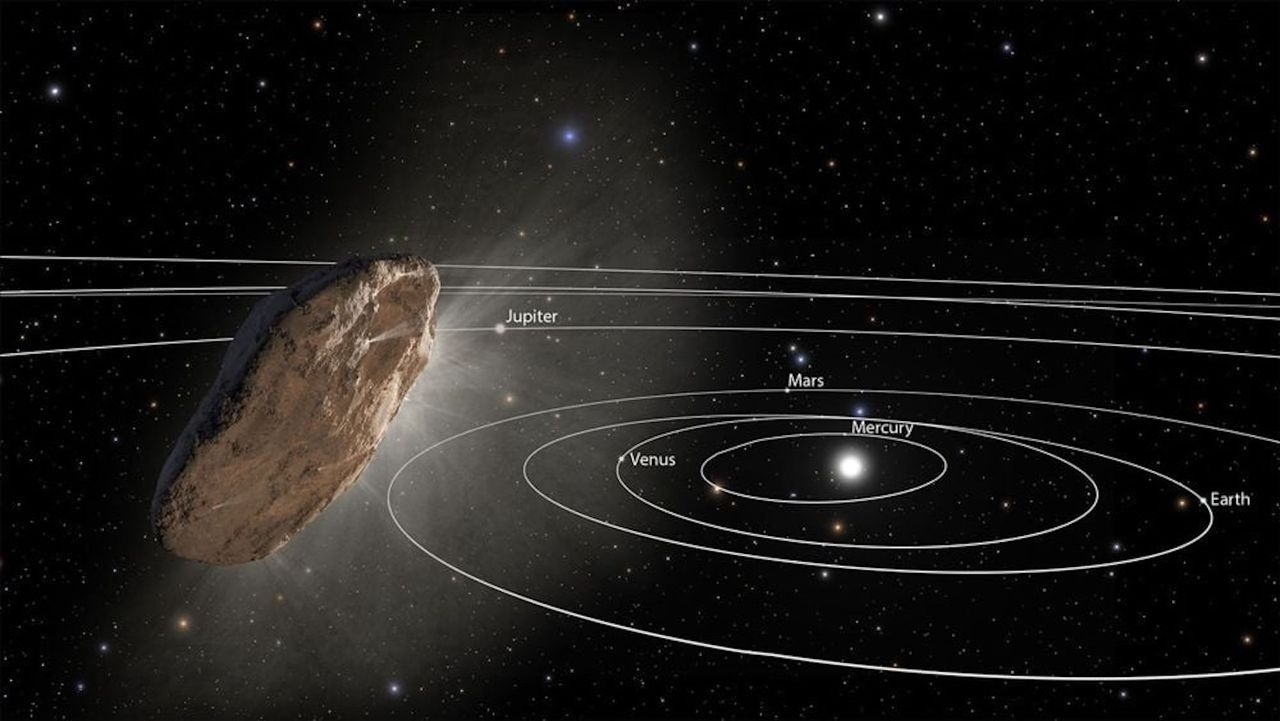Science
Researchers Assess Risks from Interstellar Objects Like 3I/ATLAS

Three interstellar objects (ISOs) have been confirmed to have entered our inner solar system: Oumuamua in 2017, 2I/Borisov in 2019, and currently, 3I/ATLAS, which is making its way through as it approaches the Sun. New research from Michigan State University aims to quantify the potential risks these objects pose to Earth, analyzing their expected distribution and impact probabilities.
The study, titled “The Distribution of Earth-Impacting Interstellar Objects,” is led by Darryl Seligman, an assistant professor in the Physics and Astronomy Department at Michigan State University. The paper, available on arxiv.org, does not attempt to calculate the number of ISOs; instead, it focuses on understanding their orbital characteristics and velocities, offering insights into their potential to impact Earth.
According to the researchers, the source of ISOs is primarily linked to M-stars, or red dwarfs, which are the most abundant star type in the Milky Way. The researchers note that while it is reasonable to assume many ISOs originate from these systems, the choice of M-star kinematics is somewhat arbitrary due to the insufficient data on ISO trajectories.
The study utilized simulations to generate a synthetic population of approximately 10 billion ISOs with M-star kinematics, resulting in around 10,000 potential Earth-impacting objects. These simulations indicate that ISOs are more likely to approach Earth from two specific directions: the solar apex and the galactic plane. The solar apex represents the direction in which the Sun moves through the Milky Way, akin to a vehicle driving through rain and hitting more raindrops as it progresses.
The galactic plane, where most stars reside, also emerges as a significant source of ISOs. The researchers explain that ISOs approaching from these directions tend to have higher velocities, although those that could potentially impact Earth often travel more slowly. This phenomenon occurs because the subset of ISOs that can intersect with Earth’s orbit tends to be low-eccentricity hyperbolic bodies, which the Sun’s gravity can more effectively capture and redirect into Earth-crossing paths.
Seasons also affect the likelihood of ISO impacts. The study finds that the highest impact velocities occur in the spring when Earth is moving toward the solar apex, while winter sees more frequent potential impactors due to Earth’s position facing the solar antapex.
Geographically, low latitudes near the equator are identified as having a greater risk of ISO impacts, with a slight increase in risk for the Northern Hemisphere, where nearly 90% of the global population resides.
While the research specifically addresses ISOs ejected from M-dwarf systems, the authors suggest that the findings may extend to other star types with varied kinematics, albeit with some alteration in distribution patterns. They emphasize that their work does not predict the total number of ISOs, as current measurements do not allow for such estimates.
The implications of this research extend to future observations, particularly with the upcoming Vera Rubin Observatory and its Legacy Survey of Space and Time. The study provides astronomers with a framework for understanding the likely origins, timings, and locations of potential ISO impacts on Earth.
As humanity continues to explore the cosmos, this research is a vital step in grasping the dynamics of ISOs and their potential threats, laying the foundation for future investigations into these intriguing celestial visitors.
-

 Lifestyle4 months ago
Lifestyle4 months agoLibraries Challenge Rising E-Book Costs Amid Growing Demand
-

 Sports4 months ago
Sports4 months agoTyreek Hill Responds to Tua Tagovailoa’s Comments on Team Dynamics
-

 Sports4 months ago
Sports4 months agoLiverpool Secures Agreement to Sign Young Striker Will Wright
-

 Lifestyle4 months ago
Lifestyle4 months agoSave Your Split Tomatoes: Expert Tips for Gardeners
-

 Lifestyle4 months ago
Lifestyle4 months agoPrincess Beatrice’s Daughter Athena Joins Siblings at London Parade
-

 World4 months ago
World4 months agoWinter Storms Lash New South Wales with Snow, Flood Risks
-

 Science3 months ago
Science3 months agoSan Francisco Hosts Unique Contest to Identify “Performative Males”
-

 Science4 months ago
Science4 months agoTrump Administration Moves to Repeal Key Climate Regulation
-

 Business4 months ago
Business4 months agoSoFi Technologies Shares Slip 2% Following Insider Stock Sale
-

 Science4 months ago
Science4 months agoNew Tool Reveals Link Between Horse Coat Condition and Parasites
-

 Sports4 months ago
Sports4 months agoElon Musk Sculpture Travels From Utah to Yosemite National Park
-

 Science4 months ago
Science4 months agoNew Study Confirms Humans Transported Stonehenge Bluestones









